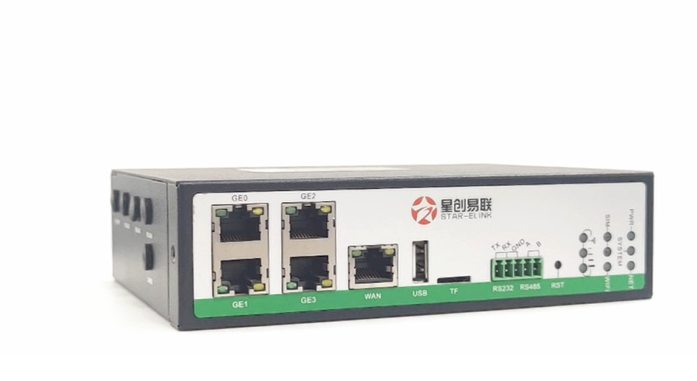Differences Between 5G/4G Industrial Routers and Consumer Routers
In modern networking, routers are indispensable components, whether in home networks, enterprises, or industrial environments. However, industrial routers and consumer routers differ significantly in design, functionality, and use cases. Below is a detailed comparison:
1. Core Functions
- Consumer Routers: Designed for homes and small offices, they primarily provide internet connectivity and distribute traffic among devices. Most include wireless functionality for smart devices.
- Industrial Routers: Built for industrial automation, these connect and manage factory equipment, sensors, and machinery. They prioritize stability in harsh conditions, with features like dust/water resistance and shockproof design.
2. Operating Environment
- Consumer Routers: Operate in controlled indoor environments (0°C to 40°C).
- Industrial Routers: Function reliably in extreme conditions, including temperatures from -40°C to 85°C, high humidity, dust, and electromagnetic interference.
3. Design and Build
- Consumer Routers: Focus on aesthetics and ease of use, often with plastic housings. Limited durability.
- Industrial Routers: Feature ruggedized metal (e.g., aluminum alloy) enclosures, IP67-rated protection, and DIN rail mounting for resilience against physical stress and harsh environments.
4. Hardware Performance
- Processor and Memory:
- Industrial routers: Equipped with high-performance CPUs, larger memory (e.g., 1GB+ RAM), and expandable storage to handle heavy data workloads.
- Consumer routers: Use low-power processors suited for light home/office tasks.
- NAT Session Capacity:
- Industrial routers support 10,000+ concurrent sessions for large-scale device connectivity.
- Consumer routers typically manage <1,000 sessions.
5. Protocol and Software Support
- Industrial Routers:
- Advanced protocols: VPN (IPSec/OpenVPN), industrial communication protocols (Modbus, PROFINET), QoS, and dynamic routing (OSPF, BGP).
- Support virtual LANs (VLANs) and traffic prioritization.
- Consumer Routers: Basic protocols like DHCP, NAT, and static routing.
6. Management Features
- Industrial Routers: Centralized management via SNMP, TR-069, or vendor-specific platforms (e.g., StarLink Cloud). Enable batch configuration, remote updates, and real-time monitoring.
- Consumer Routers: Limited to single-device web interfaces or mobile apps.
7. Reliability and Stability
- Industrial Routers: Engineered for 24/7 operation with redundant power inputs, zero-drop failover, and rigorous testing (e.g., MIL-STD-810G).
- Consumer Routers: Prone to overheating or downtime under sustained heavy loads.
8. Security
- Industrial Routers:
- Enterprise-grade security: Hardware-based encryption, intrusion detection (IDS), certificate-based authentication, and MAC/IP filtering.
- Isolate critical networks via VPN tunnels.
- Consumer Routers: Basic WPA3 encryption and firewall rules. Vulnerable to advanced cyber threats.
9. Cost and ROI
- Consumer Routers: Affordable (e.g., $50–$200), ideal for budget-conscious users.
- Industrial Routers: Higher upfront cost ($300–$3,000+) but offer long-term savings via reduced downtime and enhanced security.
10. Applications
- Consumer Routers: Home internet, streaming, gaming, and small-office use.
- Industrial Routers:
- Manufacturing: Machine connectivity for Industry 4.0, predictive maintenance.
- Energy/Utilities: Remote monitoring of pipelines and power grids.
- Transportation: Fleet management, traffic systems, and smart logistics.
Future Trends
With the rise of IoT and Industry 4.0, industrial routers are evolving to integrate AI-driven analytics, edge computing, and support for 5G standalone (SA) networks. Meanwhile, consumer routers are adopting Wi-Fi 6/6E and improved security, narrowing but not eliminating the performance gap.
In summary, industrial routers excel in demanding environments requiring ruggedness, scalability, and high reliability, while consumer routers cater to everyday connectivity needs.
